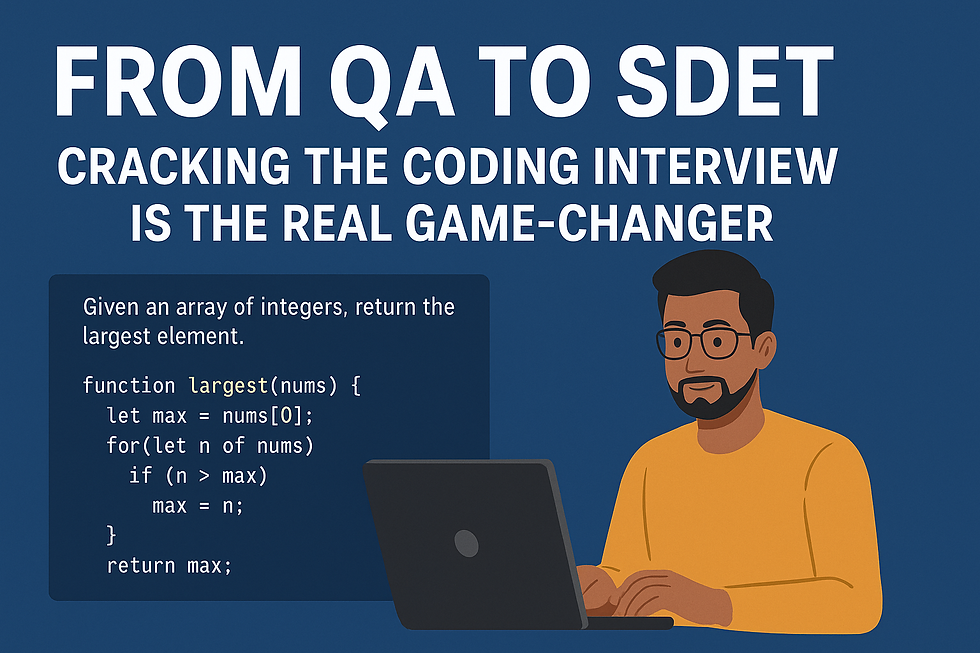From Test Cases to Code - Why the future belongs to testers who can think — and code — like developers
- Ram Duvvuri

- Sep 28
- 2 min read
Updated: Sep 29

When I started out in testing, you could build a whole career on sharp eyes, good instincts and a solid set of test cases. Those skills still matter. But if you’ve been anywhere near a modern delivery team lately, you’ll know the ground has shifted under our feet.
Releases happen weekly or even daily. Pipelines push code straight into production. “Shift left” isn’t just a buzzword anymore — it’s the way teams survive. And in the middle of all this, the humble tester is being asked to do more than ever.
That’s how the SDET role arrived. Not as a fancy rebrand, but as a signal: companies don’t just want people who use tools, they want people who can build them.
The Part Nobody Tells You
I’ve seen a lot of testers pick up Selenium, Postman, or Cypress and think they’re covered. The hard truth is that tools without coding are like a shiny car with no fuel. In interviews for SDET roles, nobody asks “which button do you click?” They ask you to write a function, parse some data, or build a quick test harness on the fly.
And that’s where even smart, experienced testers freeze — not because they can’t do it, but because they haven’t practised coding deeply enough to think on their feet.
Learning to Code “Properly”
I’m not talking about turning yourself into a full-stack developer overnight. I’m talking about treating coding as part of your craft, not a side hobby. Enough to:
manipulate data structures
write simple but clean scripts
debug what’s going on under the hood
and explain your thinking as you go
That kind of fluency changes the conversation. Suddenly you’re not “the tester at the end” — you’re an engineer contributing to quality right from the start.
How to Start Without Burning Out
Pick one language (Java, Python, JavaScript — doesn’t matter which). Start with tiny, everyday problems: reverse a string, parse a log file, write a script to generate edge-case data. Apply your tester’s mindset to each exercise. Ask for feedback. Pair up with a developer or another tester who codes.
Do that regularly and the mystery fades. Coding becomes just another skill in your toolkit — one that makes you harder to replace and opens up better roles.
A Light Nudge
If you’ve already got some basics down and want a structured way to sharpen them for SDET interviews, there are programmes built for exactly that. Our upcoming SDET Coding Interview Bootcamp is one such option — six weekends of focused, real-world challenges and mock interviews.
Whether you join something like that or self-study, the point is the same: coding fluency isn’t optional anymore. Start now, and you’ll be ahead of the curve instead of playing catch-up.



Comments